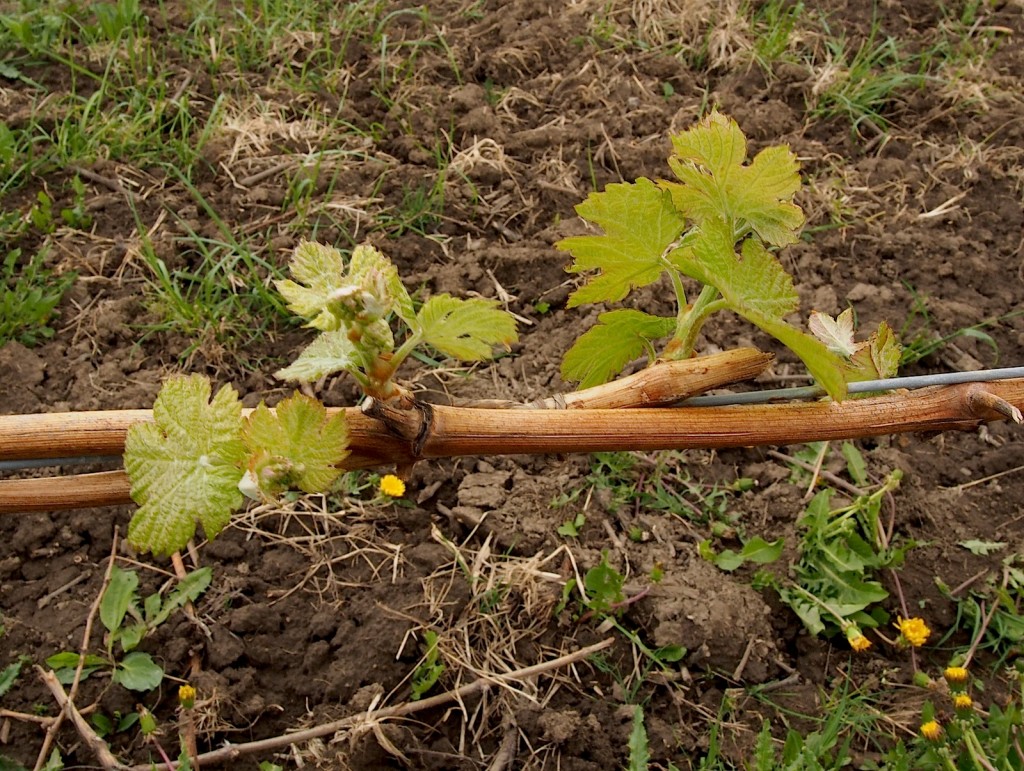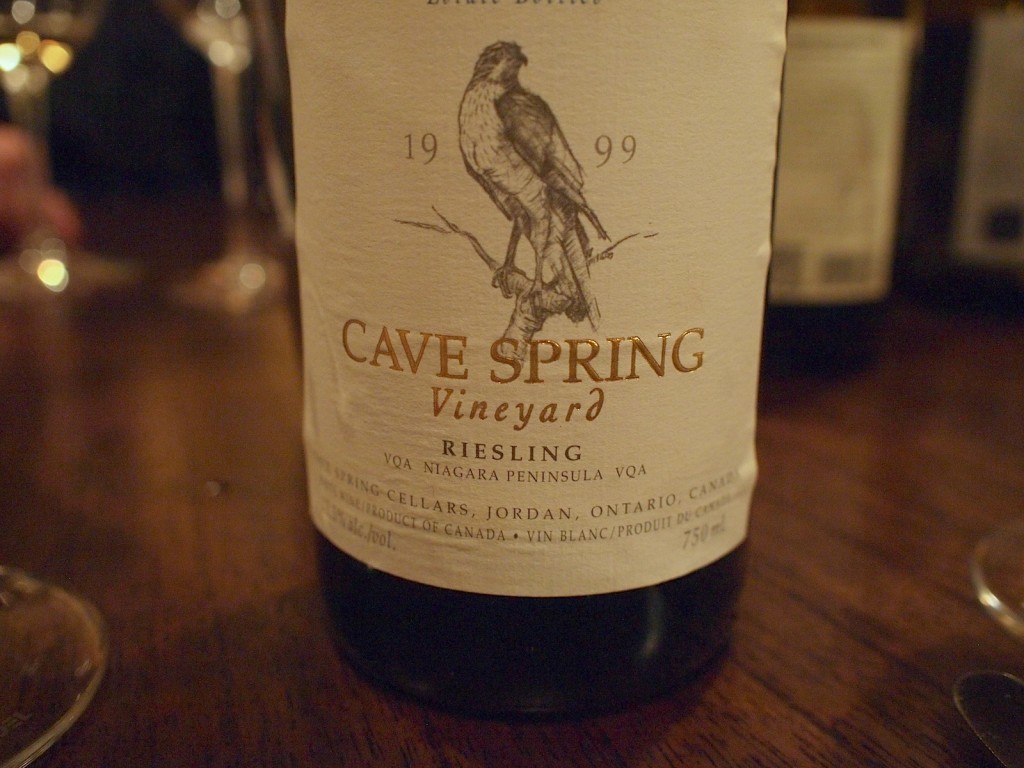As regular visitors are aware, this blog is devoted primarily to the wines of the Riesling grape, just like my book BEST WHITE WINE ON EARTH (pub. Stewart, Tabori & Chang, 2014), but I occasionally throw a sidelong glance in another direction completely, (as a journalist I’m interested in journalism and everything relating to it), or, more frequently, to the wines of other grape varieties. This is one of the latter type of blog postings, because good and great Ontario wine is certainly not only made from Riesling.
Yesterday’s tastings proved that Cabernet Franc isn’t just another interesting variety for the Niagara Peninsula, rather a big part of the future for the region’s red wine production. As the photograph above taken in the vineyard at Stratus close to Niagara on the Lake, my favorite producer of Cab-based red wine blends in this region, shows Cabernet Franc comes through the hard winters here remarkably well. Last winter was the coldest ever recorded, and yet this vine still looks good. The thing that you can’t see from this photograph is that the team lead by director J-L Groux will prune each of these vines three times instead of one in order to optimize the crop for the growing season that’s just begun. That is an awful lot of work and it requires skill. I’ve pruned vines a number of times, but never done this kind of patient, step-by-step pruning spread over several weeks watching which buds produce shoots and which of those shoots will actually bear fruit; the whole point of viticulture!
The 2010 Cabernet Franc from Stratus is cast-iron proof of this grape’s potential to give world class wines here, because it tastes neither like a red Loire wine from this grape (there is only the merest hint of green, a hint of parsley rather than green bell pepper) nor like a red Bordeaux (the tannins are rich, but silkier than is normal there), much less like a American West Coast interpretation (it has some violet aroma, but not the opulence of California & Co). Instead, it is entirely itself and beautifully balanced. This grape also plays a role, it was 15% in the 2010 vintage, of the Stratus red blend, adding freshness and aroma to help this powerful wine remain light on it’s feet in spite of all it’s tannic power. A grape that manages a great solo performance and can play in a quartet like this (with 42% Cabernet Sauvignon, 28% Merlot and 15% Petit Verdot) clearly makes a lot of sense in this special wine growing location.
However, the great thing about Cabernet Franc is that it you can produce a range of different styles from it. For example, the 2010 Cabernet Franc ‘Whimsy!’ from Southbrook (not far from Stratus) is quite powerful, but already charming and graceful with a hint of bottle age, but plenty of fruit showing. Here, Cab Franc makes up fully 31% of the blended 2010 ‘Poetica’ red that is conceived by owner Bill Redelmeier as the region’s answer to Bordeaux’s Léoville Las Cases, (one of my favorite wines from the Médoc area, as long as it has some bottle age. The ‘Poetica’ also needs some bottle age to mellow its bold dry tannins, but as the 2007 (the first vintage of this wine) showed, it doesn’t take as many years to mellow this wine as it does Léoville Las Cases. At this point in the day I was about as far away from Riesling as you can get!
Cave Spring are most famous for their CSV Riesling, pictured above, and that was the main reason they were my last appointment yesterday evening. However, they also make some excellent Chardonnay (ranging from Blanc to Blanc sparkling to the elegant, discretely oaken ‘Estate’), and some Cabernet Franc that has a perfume, vibrancy and lightness of touch that no other producer in Ontario quite achieves. The 2013 vintage ‘Niagara Escarpment’ bottling will be a great introduction to this style for many people, and the more concentrated ‘Estate’ bottling makes a serious statement that will impress others. These wines are just about to be bottled, so please be patient. Patience will also be needed for the top Cave Spring Rieslings from the 2014 vintage. The 2014 ‘CSV’ Riesling has intense peach and citrus aromas (not just lemon, but mandarin too) and marries terrific concentration with a tingling mineral freshness, the hint of residual sweetness (technically it is medium-dry) perfectly balancing the generous acidity. The 2014 ‘Estate’ is a smaller scale version of this wine, and the 2014 ‘Adam’s Steps’ is a more succulent (a lot of orange, some pineapple and passion fruit) wine with serious mineral saltiness at the finale. Normally, I don’t do tasting notes here, but let me be frank with you, these are some of the best Rieslings cave Spring ever made and deserve this attention. Maybe they’ll age as well as the great 1999 ‘CSV’ I drank here last time.



![120114_riesling_global_RZ [1600x1200]](http://www.stuartpigott.de/wp-content/uploads/2015/05/120114_riesling_global_RZ-1600x12006.jpg)